ISSN 2362-6097 (Online)
ISSN 2362-6089 (Printed)
About the Journal
► POLICIES OF THE JOURNAL
- Themes and scope
- Policy of sections
- Periodicity or frequency of the publication
- Peer review process
- Code of Conduct and Best Practice
- Statutes of the journal
- Open access policy
- Data availability policy
- Filing
- Metadata
- Access and reuse policies / Use licensing
► SUBMISSIONS
- Journal definition
- Standard Document for the elaboration of articles and Basic Guide
- Types of articles
- Title and authorship
- Autorship roles
- Conflicts of interests
- Ethical standards
- Abstract and key words
- Presentation requirements
- Bibliographical references
- Acknowledgements
- Use license, intellectual property policies of the journal, publishing permits
- Plagiarism detection and redundant publication
- Presentation
► POLICIES OF THE JOURNAL
Themes and scope
A&P Continuidad -ISSN 2362-6097 (digital form) ISSN 2362-6089 (printed form) - is a six-monthly publication; its first release was in 2014. It is grounded on the main acknowledged values pursued by the traditional journal of the Faculty of Planning, Architecture and Design of the National University of Rosario which was first published in 1963. Being conceived as a useful means for the circulation of ideas and debates related to the architectural disciplinary field embodies one of these values. Given its starting point -the intellectual and material production of the teaching staff and researchers enabling both disciplinary and interdisciplinary approaches-, the project is targeted at the university community. The focus is on the Project of Architecture due to its key role in the comprehensive training of this community. It is structured on thematic issues dealing with the reflections of modern and contemporary masters which, in turn, lead to conversations, reflections and essays of specialists as well as the production of specific material giving raise to original and unpublished articles for each one of the dossiers. The journal receives articles in Spanish but it also accepts other languages as original for the articles. In such cases, the author’s original version is published on line.
Policy of sections
Editorial
The journal has an editorial introduction for each issue that is carried out by the responsible editor. The journal’s Director will be responsible for this section if there is no responsible editor.
|
Submission opening |
Indexing |
Peer review |
Reflections of masters
This section becomes the starting point for the reflections encouraged by the theme that each issue proposes. It deals with original and unpublished translations in Spanish.
|
Submission opening |
Indexing |
Peer review |
Conversations
This section promotes dialogues with specialists in the theme approached by each issue. These dialogues may be introduced as interviews or autobiographical accounts reflecting on the proposed theme.
|
Submission opening |
Indexing |
Peer review |
Thematic dossier
This section deals with scientific and academic articles meeting the authorship standards set by the journal.
|
Submission opening |
Indexing |
Peer review |
Essays
This section is composed of works dealing with each issue’s theme that are not adjusted to a scientific framework but imply a significant contribution to the reflection proposed.
|
Submission opening |
Indexing |
Peer review |
Free topics
This section incorporates papers on topics considered within the scope of the publication, regardless of the thematic calls made by the journal.
|
Submission opening |
Indexing |
Peer review |
Periodicity or frequency of the publication
A&P Continuidad publishes two annual issues: one in the first week of July and the other in the first week of December.
Peer review process
The submitted articles meeting the authorship standards set by the journal are subjected to a process of double-blind peer review determining the viability of the publication. This ensures the anonymity of the authors as well as that of the reviewers who are external to the publishing institution.
The recommendation to the Editorial Committee carried out by the reviewers may be the publication of an article just as it has been submitted after making minor corrections; the publication provided that fundamental corrections are made; or, the rejection of the article.
For an article to be published, two favourable opinions are required. In case of disagreement in the reviewers’ opinions, a member of the Scientific Committee external to the publishing institution makes an anonymous recommendation about the viability of the article’s publication to the Editorial Committee.
The average evaluation time for articles (reception to acceptance) is 60 days.
Code of Conduct and Best Practice
a) Editorial general commitments
The Editorial Committee of A&P Continuidad is committed to ensure the due established publishing process.
b) Delivery of information related to a publication
All the information delivered by the collaborators dealing with the journal’s publishing process is filed in their own data bases. They will be able to exercise their rights to know, update, rectify or delete their personal data if they so decide.
c) Interaction with authors and authoresses
The editorial team of A&P Continuidad is committed to ensure the confidentiality of the submitted article as well as the non-use of data, arguments or interpretations for its own research before the article is published and provided that the source is introduced. It also ensures impartiality and appropriate management when dealing with it.
The names and e-mails introduced by this journal will be exclusively employed for the established goals. They will not be delivered for other purposes.
Each author participating in the publication will receive an issue.
d) Interaction with reviewers
A&P Continuidad ensures the anonymity of the works that reviewers receive. It is committed to their impartial selection in terms of the set theme. Each submission to be subjected to review requires reception acceptance as well as the fulfilment of the period of time established for this process. Once the work of a reviewer is received, the editorial team sends him/her a participation certificate along with the printed form issue of the journal.
e) Respect for the criticisms of the published articles
Each reviewer receives a worksheet devised by the Editorial Committee which has to be objectively filled out underlying his/her opinion. Once the two opinions required for an article are received, they are sent to the author whether the article is accepted with no recommendations or rejected; or, in the case that corrections are suggested for its publication. A&P Continuidad ensures confidentiality when dealing with authors’ remarks or claims.
f) Ethical-academic integrity
The editorial team of A&P Continuidad engages with the scientific community by ensuring both ethics and quality of the published articles.
The journal adheres to the Code of Conduct and Best Practice set by the Committee on Publication Ethics (COPE) (Code of Conduct and Best Practice Guidelines for Journal Editors and Code of Conduct for Journals Publishers). In order to meet the standards of this code, the journal will guarantee scientific quality of its publications as well as an adequate response to the needs of readers and authors. This code is embraced by all those involved in the publishing process of this journal.
When applicable, the Editorial Committee is committed to publish corrections, remarks, retractions or apologies.
g) Commercial aspects
A&P Continuidad has a non-profit distribution, thereby ensuring free access to the publication.
h) Conflict of interests
Any commercial, funding or particular relationship with persons or institutions having interests related to the works published by the journal should be informed.
i) Plagiarism and self-plagiarism
Articles are subjected to plagiarism and/or self-plagiarism detection by A&P Continuidad. The text editorial process set by the journal should not be carried out if any of these cases were wholly or partially detected (with no corresponding citation). The author/authoress should be notified of the decision.
Statutes of the journal
a) Preamble
A&P Continuidad is a publication of the Faculty of Planning, Architecture and Design of the National University of Rosario that has been conceived as a useful means for the circulation of ideas and debates related to the architectural disciplinary field. Given its starting point -the intellectual and material production of the teaching staff and researchers enabling both disciplinary and interdisciplinary approaches-, the project is targeted at the university community. The focus is on the Project of Architecture due to its key role in the comprehensive training of this community. Both printed and digital forms of publication seek to improve the diffusion of its contents.
The journal is structured on thematic issues dealing with the reflections of modern and contemporary masters which, in turn, lead to conversations, reflections and essays of specialists as well as the production of specific material for each one of the dossiers.
Articles should meet the following requirements:
1-They should not have been previously published. They should not be subjected to the simultaneous review of any other publisher. Their elaboration should be performed during the year in which is submitted.
2-They should contribute to the journal thematic areas clearly showing the way in which problems and data are useful for the present discussions of these areas.
3-They should introduce original outcomes derived from concluded or advanced research.
4-They should have a definite methodological development as well as a consistent data analysis.
5-They should include conceptual discussions as well as relevant and updated bibliography dealing with the specific theme of the issue.
In order to determine if they meet the journal’s standards, these articles are subjected to both plagiarism and/or self-plagiarism detection and a process of double-blind peer review determining the viability of the publication. Once standards are met, including the transfer of publishing rights, it is required an acknowledgement note signed by the author/s.
A&P Continuidad publishes articles in Spanish. Nevertheless, Italian, English, Portuguese and French are accepted as original languages in order to improve the diffusion of this journal contents among several academic communities. In such cases, the original version should be accompanied by a Spanish translation. While the author’s original version is published on line, the Spanish version is published in both paper and digital forms. Standards to be met by the articles as well as those dealing with the publishing process are introduced in each issue of the journal. They can also be consulted on line.
b) Management bodies
The Dean of the Faculty of Architecture, Planning and Design is in charge of the Director and Editorial Committee appointments. The Committee proposes the appointments of both the Editorial Coordinator and the Editorial Secretary who account for the structuring of each issue. The production team is defined in terms of professional competence and disciplinary knowledge.
c) Committee: organization and composition
The Editorial Committee is composed of teaching staff and researchers who have training in different areas related to architecture. This seeks to guarantee review broad criteria, scientific rigour, academic relevance and journal’s content appropriateness. The Editorial Committee assists the Director of A&P Continuidad in the reviewer selection, the programming of each issue along with its promotion, diffusion and academic acknowledgement.
Associated editors are outstanding teaching staff and researchers who are specialists in the theme approached by each issue. They are selected by the Editorial Committee. Their functions include the preparation of the call and the appropriateness assessment of submissions so as to determine if they will be subjected to review. The associated editor collaborates with the Editorial Coordinator and the Editorial Secretary throughout the publishing process.
The Scientific Committee is composed of outstanding teaching staff and researchers who have training in different disciplines related to architecture. They assist the Direction of A&P Continuidad and the Editorial Committee when dealing with scientific requirements, specific suggestions and the follow-up of the made decisions.
d) Functions of the Director, Secretary, Coordinator, etc.
Director
The Director accounts for the official and legal publication representation as well as the activities of the Editorial Committee.
He/she reads and accepts at first instance the articles complying with the authors’ instructions. Then, he/she classifies and assesses the content appropriateness according to each section, research support, abstract and key words structuring, presentation and article’s internal consistency.
Associated editor/s
The associated editor is a specialist with a well-known academic background ensuring the effective direction for a given thematic issue. He/she shares responsibility with the Director as regards scientific and academic quality of the published issue.
Editorial Coordinator
The Editorial Coordinator is in charge of the creation processes, the journal publishing implementation and the proposals enhancing this publication.
Editorial Secretary
The Editorial Secretary collaborates with the Director, the Editorial Coordinator and the production team ensuring the due performance of the publishing process.
Editorial Committee
The Editorial Committee accounts for content publication according to A&P Continuidad institutional and particular policies dealing with academic, scientific and disciplinary aspects.
The appointments of the members of this Committee are honorific. They do not imply labour or contractual relationships with the National University of Rosario.
Scientific Committee
The Scientific Committee of A&P Continuidad is an advisory body of the Editorial Committee. It is composed of academic and scientific representatives at the national and international levels.
The members of this Committee are proposed by the Director and ratified by the Editorial Committee.
e) Functions of the Advisory Bodies
The Scientific Committee performs Advisory Body functions. See point d).
f) Journal’s functioning features
A&P Continuidad publishes two annual issues (July and December publications). It is structured on specific sections:
-Reflections of masters
This section attempts to share a starting point for the reflections encouraged by the ideas of referents and/or specialists in the themes approached by each issue. It deals with translations of articles or fragments of articles that have never been published in Spanish.
-Conversations
This section proposes dialogues dealing with the theme approached by each issue. It may introduce interviews or autobiographical accounts related to personal experiences.
-Thematic dossier
This section deals with original and unpublished articles that meet the authorship standards set by the journal and that have been subjected to peer review.
-Essays
This section is composed of works dealing with each issue’s theme. They are not adjusted to a scientific framework but imply a significant and original contribution to the reflection proposed by each issue.
-Free topics
This section incorporates papers on topics considered within the scope of the publication, regardless of the thematic calls made by the journal.
The different publication forms of this journal should meet the publication standards for authors which are introduced by the American Psychological Association (APA).
Open access policy
A&P Continuidad contributes to the diffusion of knowledge and discussions dealing with the disciplinary themes approached by each issue. For this reason, it provides open, immediate, unlimited and free access to the contents of both printed and digital forms. Those interested in the themes introduced by each issue may read, download, save, copy, share, print or reference the whole of the journal or articles of their choice.
The journal adheres to Creative Commons Attribution-Noncommercial-ShareAlike 4.0 International Public License (CC BY-NC-SA) which acknowledges that the obstacle for international knowledge access is not technology but the failure to pay for commercial data bases access. Therefore, it does not authorize the use of the work for commercial purposes; the work should be subjected to the terms defined by the copyright holder. Furthermore, it allows to share, distribute, download and use the material for academic purposes.
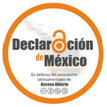
A&P Continuidad is distributed to university libraries; research centres and groups; and, university institutions by means of an exchange system for the printed form and an open access for the digital form.
The journal is sent to data bases as well as indexing and abstract systems in order to improve the visibility and impact of the articles. The web site is subjected to continuous updating; it enables to consult and download the whole of the journal’s filed material.
Data availability policy
Research data includes data obtained or used by researchers during the research process. These data lead to the validation of the research and the support of new knowledge. They can be physical or digital, raw or analyzed, qualitative or quantitative. Digital data can be found in many formats and can be stored on various media.
A&P Continuidad requires the publication of data obtained during the research which is described in the article to promote scientific values of replication, verification, reanalysis, and reinterpretation. This requirement is established by the "New criteria of quality and relevance for the evaluation and incorporation of publications to the Basic Nucleus of Argentine Scientific Journals" (RESOL-2019-1183-APN-DIR#CONICET) based on Law 26,899.
The research data of the articles accepted for publication in A&P Continuidad must be stored, curated, and published in the RDA-UNR Academic Data Repository. Each data publication has a unique DOI identifier along with the corresponding citation. Sensitive and Confidential Data Policy must be verified in case of limitations hindering data sharing.
In order to facilitate the work of curation and publication of the research data, the RDA-UNR provides documentation and a team of curators who help to meet the requirement described here. You can consult how to start using the repository and request a virtual meeting with specialized curators.
The RDA-UNR complies with international FAIR principles allowing data to be found online along with its permanent location on the web through its DOIs. The repository enables data description to understand how it has been obtained and how can be downloaded. In this way, data stored in the RDA-UNR can be integrated with other data and exchanged with other systems to optimize its reuse.
Once the data is published, it must be cited in the bibliographical references of the article. Similarly, in the event that data from other sources have been used in the research itself, these must be cited in the references.
Filling
Metadata
The registers set by “indexing metadata” section allow the access to Open Archive Initiative Protocol for Metadata Harvesting which is based on the use of Dublin Core metatags. A&P Continuidad employs the platform for the administration of Open Journal System (OJS) scientific journals resuming the language for the description of resources grounded on 15 descriptive semantic definitions for each article:
|
About resource content |
About resource intellectual property |
About resource instance |
|
1. Title |
8. Author or creator |
12. Date |
|
2. Key words |
9. Editor |
13. Resource type or category |
|
3. Description |
10. Collaborator |
14. Format |
|
4. Source |
11. Rights |
15. Resource identifier |
|
5. Language |
||
|
6. Relationship |
||
|
7. Coverage |
||
Access and reuse policies / Use licensing
The works published by A&P Continuidad are submitted to Creative Commons Attribution-Noncommercial-ShareAlike 4.0 International Public License (CC BY-NC-SA). This allows the non- commercial distribution, remixing, retouching and creation out of a work provided that new creations are credited and licensed on equal terms.
The open access character of this journal ensures free, immediate and unlimited access to the whole of the content in the printed and digital forms.
APC
A&P Continuidad does not deal with charges, fees or rates for the publication of an article (Article Processing Charge-APC) or the submission of the texts sent to be published.
► SUBMISSIONS
Journal definition
A&P Continuidad provides two annual calls for articles. They are processed when submitted taking into account the reception deadline.
This editorial project is intended for the whole of the university community. The focus is on the Project of Architecture because of the fundamental role it plays in the comprehensive training of this community. It is published in paper and digital formats; its organization is based on thematic issues dealing with the perspectives of modern and contemporary masters so as to share a starting point leading to reflections, conversations and essays of specialists. It also encourages the submission of specific material grounded on original and unpublished articles which become part of the thematic dossier.
The original language of the articles is Spanish. Nevertheless, Italian, English, Portuguese and French are accepted as original languages in order to improve the spread of this journal contents among several academic communities. In such cases, the original version should be accompanied by a Spanish translation. While the author’s original version is published on line, the Spanish version is published in both paper and digital formats.
Standard Document for the elaboration of articles and Basic Guide
In order to achieve a smooth performance of the different editorial processing stages, articles should be submitted replacing or filling the fields of the Standard Document (Download Standard Document); its general format meets the requirements of the Standards for authors (font type, margin, spacing, etc.). It should be taken into account that other formats or files will not be approved and that all fields should be filled unless otherwise specified. For further information about fields filling, Basic Guide and Comprehensive Standards for authors are provided.
Types of articles
Submitted articles should be the original and unpublished result of research (they should have been neither previously published nor submitted to any other assessment process). Although not required, YMRYD (Introduction, Materials and Methods, Results and Discussion) format is proposed. The following types and definitions which are drawn from the Bibliographical Index Publindex (2010) may be employed as reference points:
Review article: it is based on a concluded research in which the result of published or nonpublished research works -dealing with specific scientific or technological fields- are analysed, systematised and integrated. Its aim is to account for development advances and trends. It is characterised by the introduction of a thorough bibliographical review including at least 50 references.
Scientific and technological research article: it deals with a thorough account of the original results of a concluded research project. The usually employed structure has four key sections: introduction, methodology, results and conclusions.
Reflection article: it deals with the results of a concluded research from an analytical, interpretative and critical approach to a specific theme.
Title and authorship
Title should be concise, informative and, if possible, expressed in no more than 15 words. In case of the use of a subtitle, this is intended as a title complement; otherwise, text subdivisions should be introduced. The title of the article should be expressed in Spanish and English.
Text authorship (maximum 2 authors) should provide full names, or, meet ORCID standards.
ORCID provides a persistent digital identifier so that the person uses it with his/her name when dealing with research, study and innovation activities. It also provides open tools allowing transparent and reliable connections among researchers, their contributions and their affiliations. By means of the integration of research flows such as articles and research works introductions, ORDIC enables automated links between the researcher or professor and his/her professional activities, thereby ensuring the acknowledgement of his/her work.
Registration requires access to https://orcid.org/register entering full name, e-mail, password, account privacy setting and acceptance of use terms. The system sends a confirmation e-mail and provides the identifier. The whole of the registration process can be carried out in Spanish.
Each author or authoress should enter his/her main institutional affiliation (e.g., research agency, university) and country; in the case of no institutional affiliation, “independent” and country. A brief biographical author note -expressed in no more than 100 words- specifying academic or professional background, and, if appropriate, relevant research areas and publications should be added. When applicable, name of the research group or postgraduate course and institutional framework in which the article to be published is carried out should be cited. A personal photograph and a contact e-mail should also be added.
Autorship roles
The Collaborative Scholarly Networks Taxonomy (CRediT) allows for credit to be given to all roles involved in a research process and ensures that they are made visible and recognized during the communication of the results obtained. The definition of fourteen (14) categories also allows for the identification of these authorship roles as objects of retrieval, making them susceptible to classification and subsequent reuse within the framework of other research processes.
A&P Continuidad adheres to the use of CRediT (Contributor Roles Taxonomy) to systematically indicate the type of contribution each author made to the research process, reduce disputes between authors, and facilitate academic participation.
The fourteen roles defined by the taxonomy are:
- Project administration: Management and coordination responsibility for the research activity planning and execution.
- Funding acquisition - Acquisition of the financial support for the project leading to this publication.
- Formal analysis: Application of statistical, mathematical, computational, or other formal techniques to analyze or synthesize study data
- Conceptualization: Ideas; formulation or evolution of overarching research goals and aims
- Data curation – Management activities to annotate (produce metadata), scrub data and maintain research data (including software code, where it is necessary for interpreting the data itself) for initial use and later re-use.
- Writing - Review & Editing: Preparation, creation and/or presentation of the published work by those from the original research group, specifically critical review, commentary or revision – including pre-or postpublication stages
- Investigation: Conducting a research and investigation process, specifically performing the experiments, or data/evidence collection
- Methodology: Development or design of methodology; creation of models
- Resources: Provision of study materials, reagents, materials, patients, laboratory samples, animals, instrumentation, computing resources, or other analysis tools
- Writing - Original Draft: Preparation, creation and/or presentation of the published work, specifically writing the initial draft (including substantive translation)
- Software: Programming, software development; designing computer programs; implementation of the computer code and supporting algorithms; testing of existing code components
- Supervision: Oversight and leadership responsibility for the research activity planning and execution, including mentorship external to the core team
- Validation: Verification, whether as a part of the activity or separate, of the overall replication/ reproducibility of results/experiments and other research outputs
- Visualization: Preparation, creation and/or presentation of the published work, specifically visualization/ data presentation
A&P Continuidad encourages each author to declare their authorship in the Standard Document for Submitting Proposals.
Authors submitting a work should keep in mind that the document must have been read and approved by all signatories, and each must agree to its submission to the journal.
Conflicts of interests
Any commercial, funding or particular relationship with persons or institutions having interests related to the works published by the journal should be informed.
Ethical standards
The journal adheres to the Code of Conduct and Best Practice set by the Committee on Publication Ethics (COPE) (Code of Conduct and Best Practice Guidelines for Journal Editors and Code of Conduct for Journals Publishers). In order to meet the standards of this code, the journal will guarantee scientific quality of its publications as well as an adequate response to the needs of readers and authors.
Abstract and key words
The abstract -which is introduced in Spanish and English- should synthetize the objectives of the work, the employed methodology and the main conclusions emphasizing the original contributions. It should be expressed in 150 to 200 words. 3 to 5 key words should be included in Spanish and English for the thematic classification of the article. Words drawn from UNESCO Thesaurus (Available on: http://databases.unesco.otg/thessp/) or Vitruvius Network of Buenos Aires’ Libraries of Architecture (Available on: http://vocabularyserver.com/vitruvio/) are recommended.
Presentation requirements
Format
File format requires A4 page size, 2.54 cm margin, Times New Roman 12 font type, single spacing and justified alignment.
Article extent may have a minimum of 3,000 words and a maximum of 6,000 words including main text, notes and bibliographical references.
Images, figures and graphs
Images -8 to 10 ones for each article- should have a 300 dpi colour definition (being 13 x 18 the minimum size). 300 dpi should be real, that is, not subjected to edition programs. Images should be sent within the text -as location references-, and, in separate jpg or tiff files. If it is necessary for the design, the Editorial Secretary will ask authors for additional images. The Secretary also reserves the right to reduce the number of images after agreeing this with the author or authoress.
Figures (graphs, diagrams, illustrations, plans, maps or photographs) and tables should be listed and accompanied by a title or epigraph expressed in no more than 15 words as well as source information.
Example
Figura 1. Proceso de…. (Stahl y Klauer, 2008, p. 573).
A short form image reference in parentheses should be included in the text.
Example
El trabajo de composición se efectuaba por etapas, comenzando por un croquis ejecutado sobre papel cuadriculado en el cual se definían las superficies necesarias, los ejes internos de los muros y la combinación de cuerpos de los edificios (Fig. 2), para luego pasar al estudio detallado.
Author or authoress is accountable for both rights acquisition and authorization to reproduce other source images and graphs as well as interviews and material produced by collaborators other than authors.
Text sections
Text sections should be introduced by subtitles, not by numbers. Level 1 subtitles should be indicated in bold type, Level 2 ones in italics. Level 3 subtitles will be exceptionally allowed; they will be indicated in normal characters.
Terms emphasising
Words, expressions, titles of books or journals, films, TV shows that are to be emphasised should be indicated in italics.
Measures
They are displayed with a full stop character, not with a comma.
Full names
When citing full names, first and last names should be mentioned the first time; then, only last name.
Acronyms
When using an acronym, full equivalence should be provided the first time along with the acronym in parentheses.
Well-known persons should be cited with their full names.
Citations
Brief citations (expressed in no more than 40 words) should be included within the text. If a citation is expressed in more than 40 words, it is set in a separate paragraph with block indentation and no quotation marks. Citation in its original language is recommended. If the article language is not the original one, a translation in brackets is then introduced.
In-text citation
a) An author/authoress
(Last name; year, p. page number)
Examples
(Pérez, 2009, p. 23)
(Gutiérrez, 2008)
(Purcell, 1997, pp. 111-112)
Benjamin (1934) afirmó….
b) Two authors
Example
Quantrín y Rosales (2015) afirman…… o (Quantrín y Rosales, 2015, p.15)
c) Three to five authors
When citing for the first time, last names are introduced; then, only the first one followed by “et.al”.
Example
Machado, Rodríguez, Álvarez y Martínez (2005) aseguran que… / En otros experimentos los autores encontraron que… (Machado et al., 2005)
d) Corporate or institutional author with acronym or abbreviation
When citing for the first time, agency or organization full name should be introduced; then, only the abbreviation may be used.
Example
Organización de Países Exportadores de Petróleo (OPEP, 2016) y luego OPEP (2016); Organización Mundial de la Salud (OMS, 2014) y luego OMS (2014).
e) Corporate or institutional author with no acronym or abbreviation:
Example
Instituto Cervantes (2012), (Instituto Cervantes, 2012).
f) Translations and re-editions
When dealing with a non-original edition, the text body should indicate last name (first edition year/ year of the edition used).
Example
Pérez (2000/2019)
When publication date is unknown, translation year is cited.
Example
(Aristóteles, trad. 1976)
2) Notes
They may be employed to expand a concept or add a comment without disrupting discourse continuity. They should only be used if strictly necessary for text comprehension. They are not employed to indicate bibliography. They are introduced in the text by means of a superscript. Notes section is set at the end of the original manuscript before bibliographical references. They should be expressed in no more than 40 words; otherwise, they should be introduced within the text.
3) Bibliographical references
All citations -including the author’s ones so as to avoid self-plagiarism- should correspond with alphabetically arranged bibliographical references. If a source has not been referenced in the text, it should not be included in the bibliography.
a) Author/authoress
Last name, name/s initial/s. (Publication year). Book title in italics. Publication place: Publisher.
Examples
Mankiw, N. G. (2014). Macroeconomía. Barcelona, España: Antoni Bosch.
Last name, A. A. (1997). Book title in italics. Retrieved from http://www.xxxxxxx
Last name, A. A. (2006). Book title in italics. doi:xxxxx
b) Shared authorship
Example
Gentile P. y Dannone M. A. (2003). La entropía. Buenos Aires, Argentina: EUDEBA.
c) Translation
Author’s full name (year). Title. (Translator’s last name and name/s initial/s). City, country: Publisher (Year of original work publication).
Example
Laplace, P. S. (1951). Ensayo de estética. (F. W. Truscott, Trad.). Buenos Aires, Argentina: Siglo XXI (Trabajo original publicado en 1814).
d) Work with no date
Example
Martínez Baca, F. (s. f.). Los tatuajes. Puebla, México: Tipografía de la Oficina del Timbre.
e) Several works of an author/authoress in the same year
Example
López, C. (1995a). La política portuaria argentina del siglo XIX. Córdoba, Argentina: Alcan.
López, C. (1995b). Los anarquistas. Buenos Aires, Argentina: Tonini.
f) Compilation or edition
Last name, A. A. (1986). Book title. Edition place: Publisher.
Example
Wilber, K. (Ed.). (1997). El paradigma holográfico. Barcelona, España: Kairós.
g) Electronic book
Last name, A. A. (Year). Title. Retrieved from http://www.xxxxxx.xxx
Example
De Jesús Domínguez, J. (1887). La autonomía administrativa en Puerto Rico. Recuperado de http://memory.loc.gov/monitor/oct00/workplace.html
h) Book chapter
-Paper form, editor
Last name, A. A., and last name, B. B. (Year). Chapter title or entry. In A. A.
Last name. (Ed.), Book title (pp. xx-xx). City, country: Publisher.
Example
Flores, M. (2012). Legalidad, leyes y ciudadanía. En F. A. Zannoni (Ed.), Estudios sobre derecho y ciudadanía en Argentina (pp. 61-130). Córdoba, Argentina: EDIUNC.
-No editor
McLuhan, M. (1988). Prólogo. En La galaxia de Gutenberg: génesis del homo typhografifcus (pp. 7-19). Barcelona, España: Galaxia de Gutenberg.
-Digital version with a DOI
Albarracín, D. (2002). Cognition in persuasion: An analysis of information processing in response to persuasive communications. En M. P. Zanna (Ed.), Advances in experimental social psychology (Vol. 3, pp. 61–130). doi:10.1016/S0065-2601(02)80004-1
i) Thesis
Last name, A. (Year). Thesis title. (Licentiate, Master or PhD thesis). Institution name, place. Retrieved from www.xxxxxxx
Example
Santos, S. (2000). Las normas de convivencia en la sociedad francesa del siglo XVIII (Tesis doctoral). Universidad Nacional de Tres de Febrero, Argentina. Recuperado de http://www.untref.edu.ar/5780/1/ECSRAP.F07.pdf
j) Printed article
Last name, A. A. (Date). Article title. Journal name, volume (when applicable, number), pages.
Examples
Gastaldi, H. y Bruner, T. A. (1971). El verbo en infinitivo y su uso. Lingüística aplicada, 22(2), 101-113.
Daer, J. y Linden, I. H. (2008). La fiesta popular en México a partir del estudio de un caso. Perífrasis, 8(1), 73-82.
k) Online article
Last name, A. A. (Year). Article title. Journal name, volume (when applicable), pages. Retrieved from http://
Examples
Capuano, R. C., Stubrin, P. y Carloni, D. (1997). Estudio, prevención y diagnóstico de dengue. Medicina, 54, 337-343. Recuperado de http://www.trend-statement.org/asp/documents/statements/AJPH_Mar2004_Trendstatement.pdf
Sillick, T. J. y Schutte, N. S. (2006). Emotional intelligence and self-esteem mediate between perceived early parental love and adult happiness. E-Journal of Applied Psychology, 2(2), 38-48. Recuperado de http://ojs.lib.swin.edu.au /index. php/ejap
l) Article in press
Example
Briscoe, R. (en prensa). Egocentric spatial representation in action and perception. Philosophy and Phenomenological Research. Recuperado de http://cogprints .org/5780/1/ECSRAP.F07.pdf
m) Newspaper
-Explicit authorship
Last name, A. A. (date). Article title. Newspaper name, p.
Examples
Pérez, J. (2000, febrero 4). Incendio en la Patagonia. La razón, p. 23.
Silva, B. (2019, junio 26). Polémica por decisión judicial. La capital, pp. 23-28.
-No explicit authorship
Article title. (Date). Newspaper name, p.
Example
Incendio en la Patagonia. (2000, agosto 7). La razón, p. 23.
-Online
Last name, A. A. (Date). Article title. Newspaper name. Retrieved from
Example
Pérez, J. (2019, febrero 26). Incendio en la Patagonia. Diario Veloz. Recuperado de http://m.diarioveloz.com/notas/48303-siguen-los-incendios-la-patagonia
-No author/authoress
Example
Incendio en la Patagonia. (2016, diciembre 3). Diario Veloz. Recuperado de http://m.diarioveloz.com/notas/48303-siguen-los-incendios-la-patagonia
n) Symposium or congress lecture
Last name, A. (Date). Lecture title. Chairperson last name, Symposium or congress. Symposium that is carried out in the congress should be indicated. Organization, place.
Example
Manrique, D. (Junio de 2011). Evolución en el estudio y conceptualización de la consciencia. En H. Castillo (Presidencia), El psicoanálisis en Latinoamérica. Simposio llevado a cabo en el XXXIII Congreso Iberoamericano de Psicología, Río Cuarto, Argentina.
ñ) Archive material
Last name, A. A. (Year, month, day). Material title. [Material description] Collection name (Number, box number, archive number, etc.). Name and place repository.
Repository letter
Example
Gómez, L. (1935, febrero 4). [Carta a Alfredo Varela]. Archivo Alfredo Varela (GEB serie 1.3, Caja 371, Carpeta 33), Córdoba, Argentina.
Personal communication, emails, informal interviews, personal letters, etc.
Examples
K. Lutes (comunicación personal, abril 18, 2001)
(V.-G. Nguyen, comunicación personal, septiembre 28, 1998)
This type of communication should not be included in the references.
Law, act, judicial decision number (Publication year, month and day). Law, act, judicial decision title. Publication. City, country.
Example
Ley 163 (1959, diciembre 30). Por la cual se dictan medidas sobre defensa y conservación del patrimonio histórico, artístico y monumentos públicos nacionales. Boletín oficial de la República Argentina. Buenos Aires, Argentina.
o) Data
Balparda, L., del Valle, H., López, D., Torralba, M., Tazzioli, F., Ciattaglia, B., Vicioso, B., Peña, H., Delorenzi, D., Solís, T. (2023). Datos de: Huella Urbana de la Ciudad de Rosario, Santa Fe, Argentina. [Dataset]. Versión del 1 de agosto de 2023. Repositorio de datos académicos de la UNR. doi: https://doi.org/10.57715/UNR/EXIVRO
Any other situation that has not been not considered should be addressed according to APA Standards (American Psychological Association, Sixth Edition)
Acknowledgements
Funding sources for each one of the studies should be acknowledged by means of a brief introduction of both the funding organism and the identification code. Work collaborators who ar
Use license, intellectual property policies of the journal, publishing permits
Works published by A&P Continuidad are submitted to Creative Commons Attribution-Noncommercial-ShareAlike 4.0 International Public License (CC BY-NC-SA) allowing others the non-commercial distribution, remix, retouching and creation out of a work provided that credit and license for new creations are granted on equal terms.
Open access to this journal guarantees immediate, unrestricted and free access to the contents of paper and digital form editions.
Those contributing with their works to the journal should submit -along with the article- research supporting data, and, make a deposit according to Law 26.899/2013, Free Access Institutional Repositories.
Each author/authoress
-assigns his/her copyright for the first publication of the work to A&P Continuidad -thematic journal of the Faculty of Architecture, Planning and Design of the National University of Rosario- being submitted to Creative Commons Attribution-Noncommercial-ShareAlike 4.0 International Public License;
-certifies that he/she is the original author/authoress of the article which is both the result of an original research and the product of his/her direct intellectual contribution;
-states his/her full copyright ownership enabling the unrestricted transfer of the rights that have been granted, and, accounts for any judicial dispute related to intellectual property rights so as to exonerate National University of Rosario from any liability;
-places on record that the article is not intended to be published in any other journal or publishing medium and that, if approved, it will not be submitted to future publication in the course of the evaluation and publication process;
-authorizes A&P Continuidad -a non-profit and open access electronic publication that does not remunerate authors- the electronic, print or other magnetic or photographic media diffusion of the article along with its inclusion in both the Hyper-Media Repository of the National University of Rosario and the data bases considered to be applicable for its indexing by the editor.
Click here for the transfer of rights form.
Plagiarism detection and redundant publication
Articles are subjected to plagiarism and/or self-plagiarism detection by A&P Continuidad. If any of these cases were wholly or partially detected (with no corresponding citation), the text editorial process set by the journal should not be carried out and the author/authoress should be notified of the decision.
Nor redundant or duplicate publications, whether wholly or partially detected, will be allowed.
Presentation
If the author/authoress is an Open Journal System (OJS) registered user, he/she should submit his/her article and log in as member. If not, he/she should start the registration process in order to send his/her article. In A&P Continuidad, text presentation, processing and review are free. Submission should meet the following verification procedure standards:
1-Texts are original; they have been neither previously published nor submitted to the consideration of any other journal.
2-They meet style and bibliographical requirements according to Authors’ Standards.
3-Titles are in Spanish and English; they are expressed in no more than 15 words. Abstracts of 150 to 200 words are accompanied by 3 to 5 key words. Abstracts and key words are in Spanish and English.
4-Each author’s biographical profile (which is expressed in no more than 100 words), a personal photograph, institutional affiliation and country are provided.
5-Images illustrating each article (8 to 10 ones) are sent in separate jpg or tiff files which are listed according to the order of appearance in the article. Definition: 300 dpi or similar in 13 x 18 size. Epigraphs for these images are provided.
6-Authors know and accept each one of the ethical behaviour standards defined in the Code of Conduct and Best Practice.
7-Assignment of Rights forms signed by each author are attached.
8-Authors send research supporting data and make their deposits according to Law 26.899/2013, Free Access Institutional Repositories.
In case of any submission difficulty, please, write to: aypcontinuidad01@gmail.com. The Editorial Secretary will assist you.





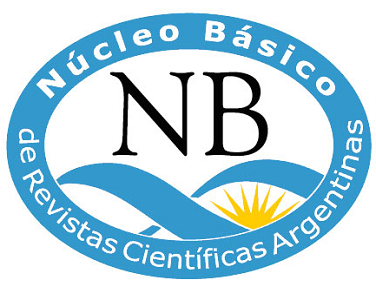


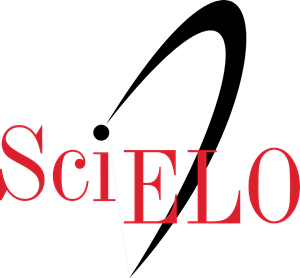



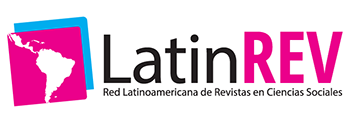
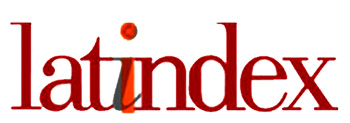
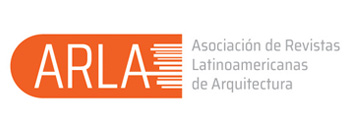
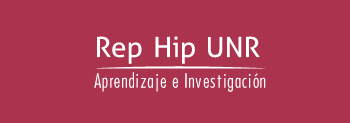



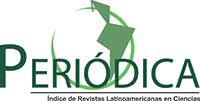








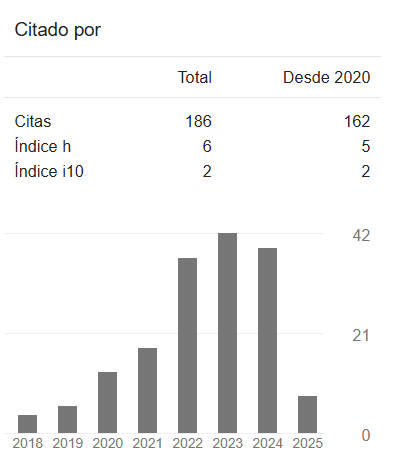


 This OJS site and its metadata are under a
This OJS site and its metadata are under a 

